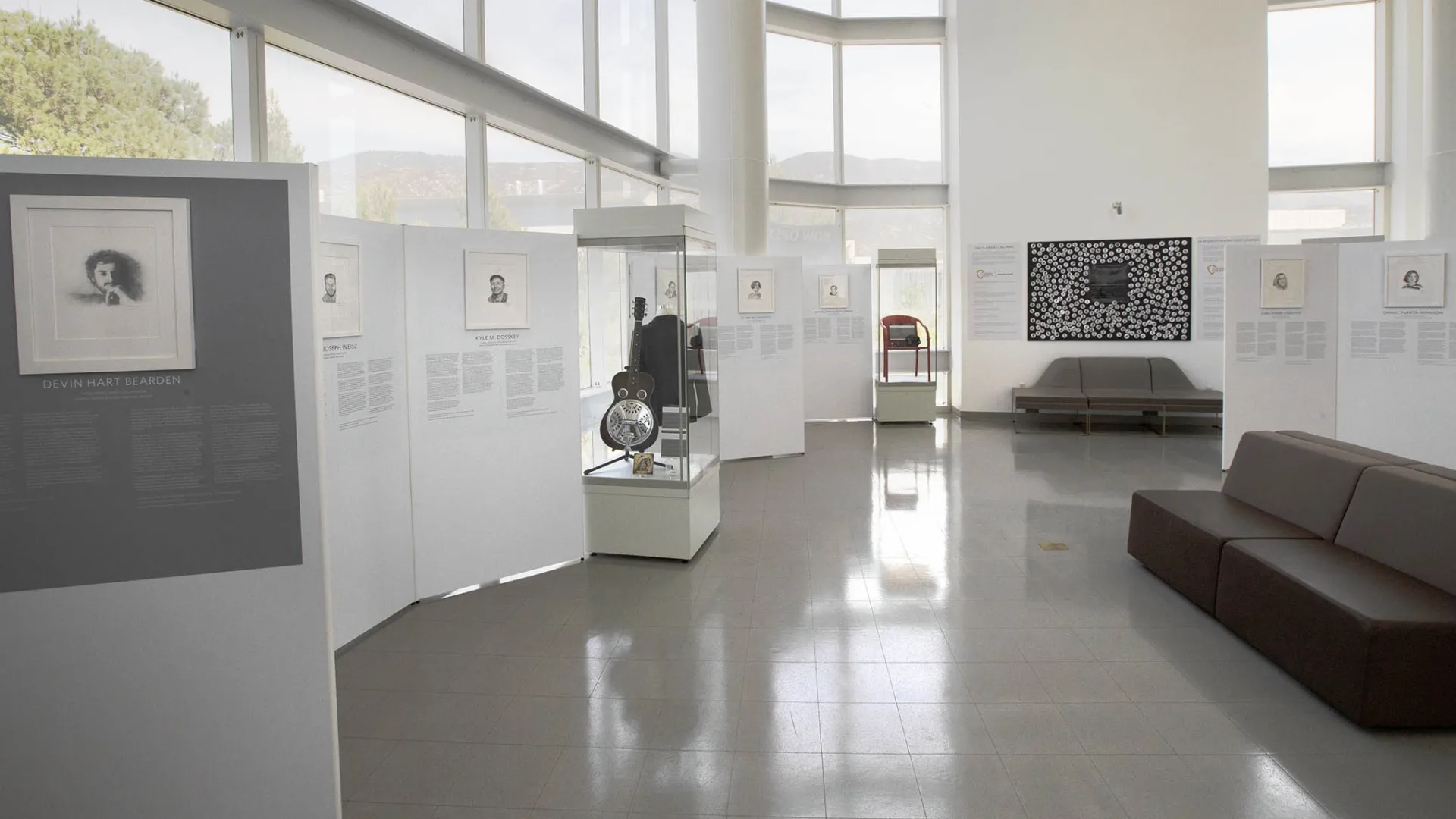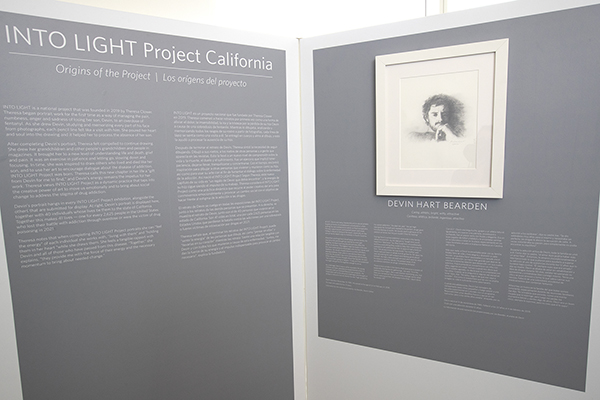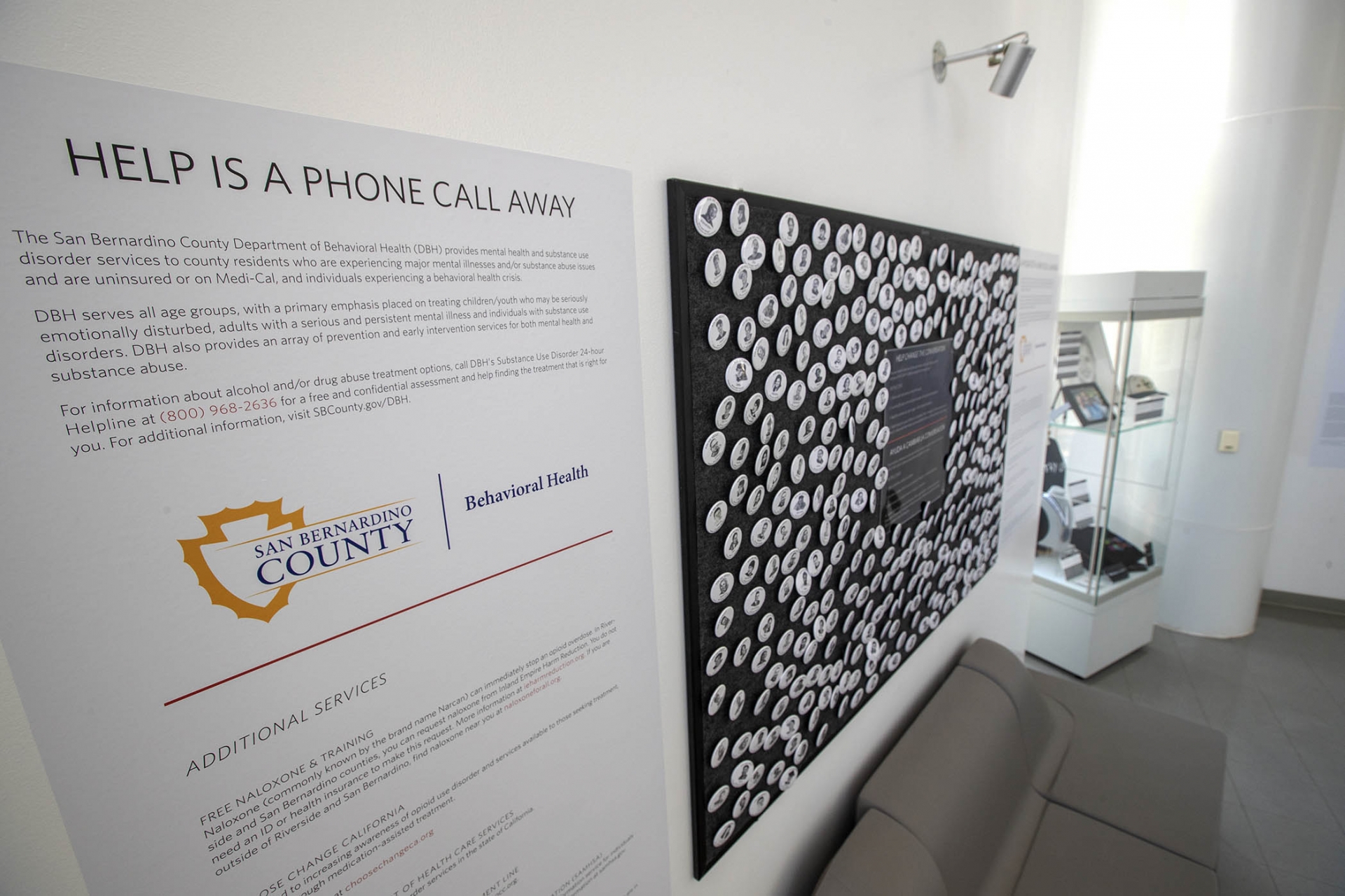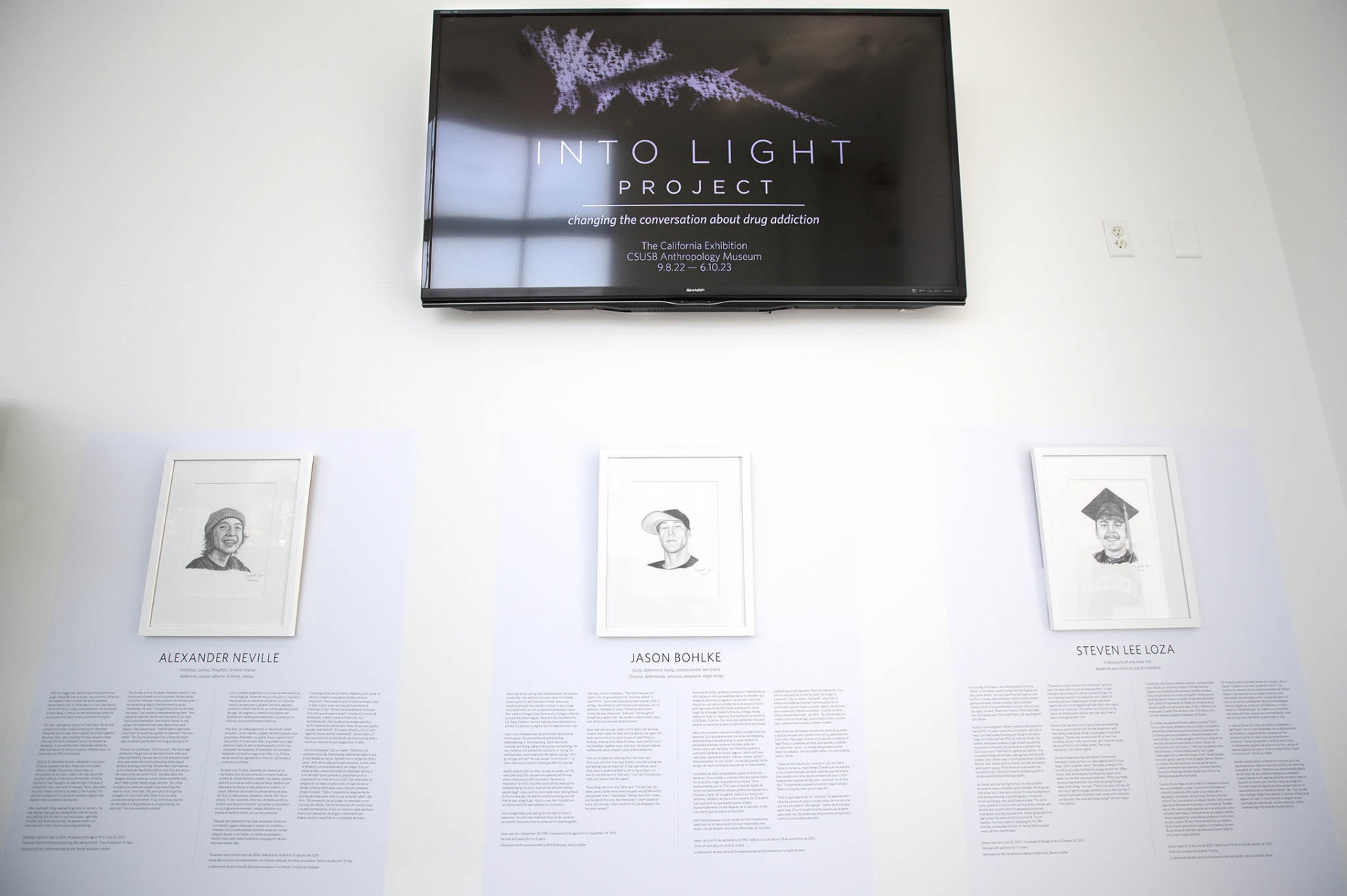Joe Gutierrez | Office of Strategic Communication | (909) 537-3007 | joeg@csusb.edu

The INTO LIGHT Project, which aims to change the national conversation around addiction, formally opened its California edition of its national exhibit at Cal State San Bernardino’s Anthropology Museum on Sept. 9.
The California exhibit is part of a nationwide effort by INTO LIGHT Project to have displays in each of the nation’s 50 states. Prior to California, INTO LIGHT most recently opened its Florida show. Other states that have hosed INTO LIGHT Project exhibitions since 2019 are Maryland, North Carolina, Ohio, Pennsylvania and Virginia.
The California exhibit will be on display through June 10. The Anthropology Museum is located in the College of Social and Behavioral Sciences building third floor, room SB-306.
The INTO LIGHT Project works to destigmatize the topic of addiction by bringing to light the portraits and stories, through the eyes of their loved ones, of 41 individuals who lost their lives to a drug overdose or drug poisoning. Broadening the discussion of SUD, addiction, and overdose – and removing its stigma – helps provide some relief for families who have lost loved ones to the overdose epidemic, as well as encouraging those battling SUD to seek help.

A local artist, Elizabeth Jones of Pomona, assisted with graphite portraits of those lost to SUD, which were drawn based on photographs of the individuals whose stories make up the exhibit.
Clower said the pencil drawings serve as an intentional reminder that we are all made up of black and white, and every shade in between.
“No one,” she said, “should be defined by their darkest moments alone.” In other words, the identity of those with SUD is more than addiction, and the exhibition seeks to present the lives of those lost in a manner that helps others to see the fullness of the lives lost to SUD.
Motivated by the death of her son, Devin, to an accidental overdose of fentanyl in 2018, Clower took up portrait work as a way of working through her grief. After completing Devin’s portrait, she was inspired to find others who lived and died like her son and to show the extent of the drug epidemic through exhibits involving each state. She aspired to draw their portraits, tell their stories, and start a dialogue around the disease.
INTO LIGHT Project broadly seeks to:
- Put a human face on the disease of addiction through hand-drawn portraits and written narratives;
- Change the conversation about drug addiction to help erase the stigma and shame so those with the disease will seek the quality care they need and deserve;
- Educate the public about drug addiction as a disease; and
- Organize exhibitions representing each of the 50 states.
Like other INTO LIGHT exhibits, the California show features stories and graphite portraits of individuals with some connection to California who lost their lives to a drug-related overdose. When the show closes in June, loved ones will be given the portraits as gifts. Unique to the California show is the display of objects left behind by the featured individuals. The California show is also debuting INTO LIGHT’s “Ask Me About” campaign, through which museum visitors are invited to take a pin that features one of the 41 individuals represented in the exhibition. The goal of the Ask Me About campaign is to extend the stories of the exhibition outside of museum walls, as visitors wear their pin and share what they learned through INTO LIGHT.

“The project is a great match for the mission of the CSUSB Anthropology Museum, which is to provide CSUSB students with hands-on experience in museum work, and to regularly prepare and host exhibitions that illustrate and interrogate the cultural contexts and meanings of community histories, events, identities, and behaviors, from the Inland Empire and afar,” explained Arianna Huhn, director of the Anthropology Museum and associate professor of anthropology.
The California INTO LIGHT exhibit was prepared in collaboration with the university’s masters in counseling program, which trains future counselors who will work in the community. Under the direction of Lorraine Hedtke of the MS in Counseling program and an international expert in the field of death and grief, the students conducted interviews with individuals who nominated a family member or friend who they lost to a drug overdose or drug poisoning. The interviews were used to prepare for a narrative about the person, which is now on display in the museum. The stories collected highlight the unique aspects of the personality and interests of the person who died as a way to honor the loving relationship that transcends death.
“The MS Counseling program prepares students to have conversations that bring forward the most loving stories about a person who has died that can ease the pain of grief and assist in making sense out of death that feels taboo or traumatic,” Hedtke said. “Students will take this practical experience into their future work counseling those who are suffering and bereaved.”
In addition to the exhibit, the INTO LIGHT Project, CSUSB and the San Bernardino County Department of Behavioral Health will offer during the exhibit’s run a series of programs that focus on SUD.
To learn more about the exhibit, contact the California INTO LIGHT Project directors Arianna Huhn (ahuhn@csusb.edu) and Lorraine Hedtke (lhedke@csusb.edu). For more information visit the INTO LIGHT Project website or email founder Theresa Clower at tclower@intolightproject.org.
